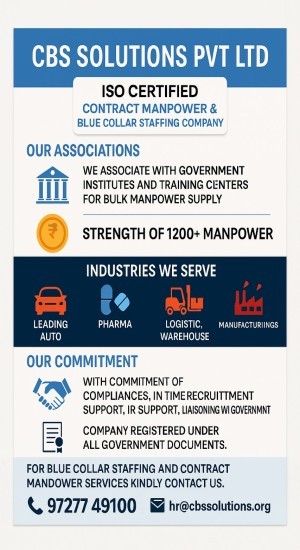“HR analytics will expose gaps in employee productivity, highlight ways to improve engagement, uncover what motivates employees, and map the overall employment experience,” she says.
In
looking at the new year ahead, it only makes sense to also look back at the
topics and issues that dominated HR conversations last year. In HRM
Magazine’s 2020 retrospective series alone, a couple of commonly recurring
themes emerged.
First
among these was employee experience and engagement: one of the most clicked-on
news stories of the year centred on a report that claimed Singaporean professionals
were the least productive in the world. One also cannot reflect on 2020 without
bringing up workplace culture. Uber’s seemingly never- ending woes put office
culture in the spotlight, while the Harvey Weinstein sexual assault scandal
exploded into a global phenomenon centred on the #MeToo hashtag.
Another
buzzword that came up time and again was “change”. Change is a basic fact of
life, but technological advancements have completely transformed the way
organisations do business at exponential, unpredictable rates. Some of HRM
Magazine’s most popular articles from last year were about understanding
and navigating the ever-shifting business landscape from an HR perspective.
These
trends from last year look set to shape the HR agenda again in 2021 - as this
forecast for HR practitioners in Asia and around the world reveals.
Technology over the long
haul
With
the Singaporean government’s continuing drive to strengthen technology
infrastructure and build a “Smart Nation”, digital transformation is likely to
remain a key priority for many in the coming year. Recruitment firm Robert
Walters notes that e-commerce, insurance and logistics will be some of the key
sectors driving this continuing digital transformation.
Additionally,
as millennials become the most dominant segment of the workforce, it has become
increasingly vital for organisations to address the workplace expectations of
these “digital natives”.
On
a day-to-day basis, this could mean any number of things. Employment agency
Randstad says that in 2018, “more organisations will place data at the
forefront of strategic workforce planning.” This will include the development
of metrics that help HR leaders understand “how to build better teams, make
more processes agile or lean, analyse the utilisation of resources across the
company, and truly understand the output of cross-functional teams.”
Karen
Cariss, CEO of PageUp, a cloud-based talent management technology provider,
agrees. “HR analytics will expose gaps in employee productivity, highlight ways
to improve engagement, uncover what motivates employees, and map the overall
employment experience,” she says.
“Machine
learning algorithms will (also) apply text and pattern recognition analytics to
enrich the insights delivered via employee surveys,” she adds. This will help
to give HR professionals an even more accurate reflection of employee
sentiment, engagement and productivity in real time.
“HR
professionals will have the tools to be able to better make data-driven
workforce decisions,” Cariss predicts.
Improved
data insights will also help organisations move away from a one-size-fits-all
approach to talent management; instead enabling them to take on a customised,
targeted perspective.
But
the potential of technology in talent management isn’t just in data. Andrew
Chamberlain, the chief economist of employment website Glassdoor, envisions new
uses for Augmented Reality (AR) and Virtual Reality (VR) technology in
enhancing the employee experience.
“[This
could be by] providing simulations of tasks and work challenges, better
preparing workers for real-world situations before they have to face them,” he
suggests.
Chamberlain
expects such technology to also revolutionise recruitment. He says candidates
can soon expect interactive job advertisements that allow them to take a VR
tour of their future Australian workplace while sitting in Singapore, and they
will also be able to complete virtual assessments during their recruitment
process.
However,
HR must be mindful of balancing the human touch with these technical
advancements.
“As
companies pace themselves in the bid to digitise, so too will the HR function
in identifying the specific technologies that can be automated to increase our
efficiency. For instance, we need to be mindful of how we can retain aspects
that relate to human interactions,” notes Ian Jongho Im, Head of Talent at
MoneySmart.
Robot revolution
Technology
that can think for itself was once only fantasised about in movies
like Blade Runner, but with the rise of bots and automation, artificial
intelligence (AI) is very much a key facet of 2018’s digital transformation
promise.
The 2017
Deloitte Human Capital Trends survey found that 41% of respondents had
already adopted AI technologies in their workplace, or were in the midst of
doing so.
“Revolutionary
new AI tools are complementing people’s skills in HR, upending many established
and easy-to-automate roles,” notes Chamberlain.
But
even as AI increasingly automates various tasks – especially the tedious
administrative ones – HR need not worry about being left behind. For
instance, if AI-enabled chatbots increasingly overtake candidate-to-job
matching, recruiters will then have more time to actually talk to candidates
and run negotiations – making for a more positive talent acquisition experience
for everyone.
Employee experience
Last
year, talent outsourcing firm KellyOCG found that a new talent shortage was
looming in Singapore and the Asia-Pacific – and that 75% of C-suite
leaders in Singapore, and 61% in the Asia-Pacific, expected this lack of talent
to disrupt their business prospects over the coming three years.
In
such a talent drought, companies must consider if their compensation packages
still reflect market realities.
“Wage
growth, while still rather anaemic, will gain momentum in 2021 due to the
intense hunt for talent,” says Jim Link, Randstad’s chief HR officer. “Those
wishing to hire will need to offer strong pay packages to attract the best
talent.”
It
is also perhaps an opportunity to stand out by offering less traditional perks,
such as wellness benefits, and competitive parental leave opportunities. HR
leaders will also be looking to further develop the talent that already exists
within their organisations. When change is the only constant, it is imperative
for an organisation’s workforce to be
continually levelling up.
“Employers
will need to become more focused on training their existing or future hires.
The talent that exists doesn’t have the depth of skills needed in many cases,”
says Jodi Chavez, president of Randstad Professionals and Life Sciences.
But
Cariss says this shouldn’t mean organisations rely on traditional
learning models alone – many of these have already hit their use-by dates.
Self-directed micro-learning is the way of the future, she says.
“Expect
to see more businesses move away from traditional, structured programmes,
toward self-directed, social, informal learning platforms,” she says. “HR and
businesses will play a crucial role in delivering learning that is continuous,
consumable, relevant, and available on-demand.”
Workplace equality and
diversity
It
would be remiss to talk about the workplace in 2021 without acknowledging
equality and diversity, especially given how the #MeToo phenomenon dominated
headlines at the end of 2020. Even since then, December and January have been
packed with developments and announcements that speak for themselves in setting
a clear workplace equality agenda for 2021.
Iceland,
for instance, kicked off the year by legislating for equal pay – the first
country in the world to make it illegal for men to be paid more than women for
the same work. Meanwhile, Facebook published its sexual harassment policy with
every intention of beginning what might be a difficult dialogue for its own
organisation and community.
“There’s
no question that it is complicated and challenging to get this right,” admitted
Sheryl Sandberg, Chief Operating Officer and Lori Goler, Vice-President of
People, in a joint statement. “What we can do is be as transparent as
possible, share best practices, and learn from one another — recognising that
policies will evolve as we gain experience.”
As
2020 closed, Microsoft became one of the first major companies to get rid of
‘forced arbitration clauses’ that require employees to settle workplace
disputes through a private process. This is cheaper and faster than having
claims dealt with through a court, but also opaque. Victims of workplace
harassment have complained that these processes have
allowed poor behaviour to continue unchecked.
In
the entertainment industry – where the Harvey Weinstein sexual harassment
scandal originated – women leaders also launched a new workplace equality
campaign called “Time’s Up”, whose first initiative was the formation of a
Commission on Sexual Harassment and Advancing Equality in the Workplace. The
Commission intends to push for safer, fairer, and more accountable workplaces.
As
noted by Kathleen Kennedy, the President of Lucasfilm who helped to form the
Commission, “[safe and] inclusive work environments result in stronger and more
successful businesses.”
2020 made the business case for positive workplace environments, and 2018 looks to
be the year when employers walk the talk, or face the long-term
consequences to their employer brands.
What does it mean for 2021?
Undoubtedly,
2021 will see the launch of more campaigns, policies, and initiatives aimed at
making the workplace a fairer and more inclusive environment. Meanwhile, the
continued rise of technology – and all the disruptions that brings –
will necessitate the development of a change-agile leadership and workforce.
Unsurprisingly,
then, “there will still be a high demand for HR experts who are business-savvy
and have change management experience,” as per a recent report by Robert
Walters. Learning and development, particularly leadership development
and organisational design, are likely to come into focus in this
tech-driven, constantly changing landscape.
HR leaders must step
up and leverage their seat at the table in preparing the workplace and
workforce for the sea of change ahead. They need to ride the wave – or risk
drowning instead.

